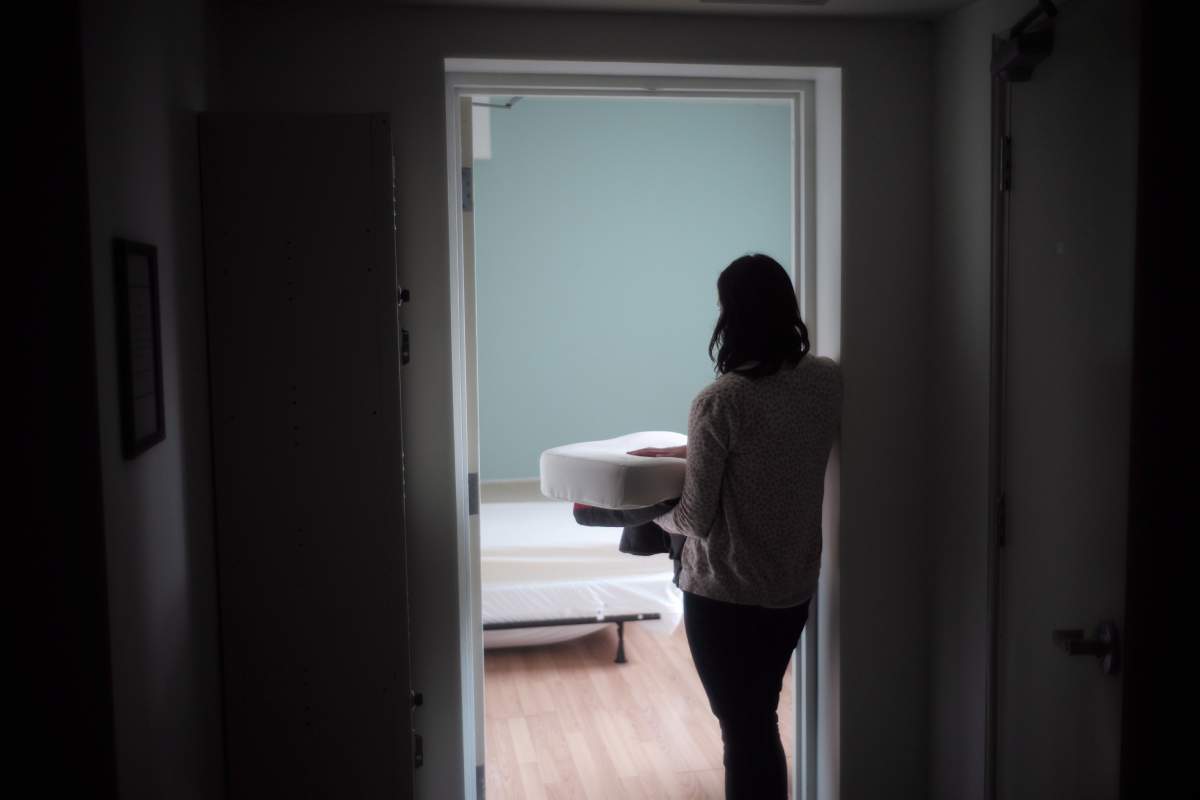OTTAWA — Women who are victims of violence are being turned away from shelters across Canada due to a chronic lack of resources and funding, according to two new national studies, including one by the House of Commons committee on the status of women.

The studies mark the first time shelters for female victims of violence have been studied specifically to determine the scope of services and supports provided by shelters and transition houses to women and children fleeing violence in Canada.
One in five shelters report they have not received funding increases in 10 years or more — a situation that is unsustainable, said Kaitlin Bardswich, communications and development co-ordinator for Women’s Shelters Canada, which led one of the studies.
“Shelters are not funded adequately, they’ve never really been funded adequately,” Bardswich said. “They’re essentially doing the same work year after year with less money, because things like rent and taxes and food costs are all increasing, but funding is not increasing.”
More than 400 shelters took part in that three-year study. Responses were received from shelters in every province, as well as from facilities in rural, northern and remote communities.
Shelters everywhere are taking in more women and children than they have beds, with four in 10 facilities reporting they are “almost always” full.
Three-quarters of the shelters surveyed reported they have let women stay longer than provincial or territorial rules allow. This is especially common in cities and towns with housing shortages, where women fleeing violence in their homes might have nowhere else to go.
WATCH: Domestic violence victims struggle to navigate justice system, says Winnipeg family lawyer (April 25)

But extending stays for some women means others get turned away — a situation that is emotionally difficult for staff and potentially deadly for women who remain with abusive partners.

Get breaking National news
A woman is killed every two-and-a-half days in Canada, with more than half of the victims killed by current or former intimate partners, according to federal data.
READ MORE: Overcoming abuse — How to find legal help, shelters when leaving family violence in Canada
“Some women might choose to become homeless, which is not a good situation, or they may couch-surf. But when they have children it makes sense to stay somewhere where they have a roof,” Bardswich said, noting the dangers that entails.
Statistics Canada does provide data on individuals who stay in shelters in Canada and on the number of shelter beds available to various populations, but no real study has previously been done on the state of the shelters themselves.
Women’s Shelters Canada found high rates of staff burnout, due to low wages and poor benefits. Employees who do remain are burdened with having to help raise funds to keep shelter doors open in addition to providing care and support to women.
Meanwhile, the average age of shelter buildings across Canada is now 45 years, with the vast majority of them in need of repairs. Fewer than half are able to afford those repairs, the study found.
Many of the facilities are not accessible for women with disabilities and a majority say supplying basic necessities, such as food and transportation, to their clients is a “major challenge.”
READ MORE: Overcoming abuse – How to support and respect survivors of family violence
All of these findings are echoed in another report released Wednesday by the House of Commons committee on the status of women.
It included a list of 20 recommendations, including more funding for repairs, renovations and expansions of women’s shelters and transition houses. It also calls for more funding for on-reserve shelters serving Indigenous women and children and more resources for shelters to expand culturally sensitive services for Indigenous women as well as immigrants, non-binary and transgender women and women with disabilities.
WATCH: Feds announce $50M for programs across Canada to support survivors of gender-based violence (Dec. 3)

“Fleeing an abusive relationship takes strength and courage, as the moments after women and children flee an abusive relationship is the most dangerous time for them,” the committee report says. “It is therefore crucial that housing options and support services be available so that women and children fleeing abusive relationships have somewhere safe to go.”
Funding for shelters everywhere but First Nations reserves is principally a provincial responsibility, however, which is why services and capacity vary widely across the country. Major gaps exist, for example, between services available to victims of violence in urban areas compared to those in more remote communities.
That’s why both the status-of-women committee and Women’s Shelters Canada separately recommend a national plan on violence against women.
This could create a national standard of funding and services to address the current patchwork, Bardswich said.
The Trudeau government did create a national gender-based-violence strategy, but Bardswich said this only covers federal agencies.
WATCH: What exactly is domestic violence? (April 26)

“What we’re advocating for is a national action plan that involves the provinces and the territories and the federal government coming together to have a plan of action around domestic violence … it’s something the UN has said every country should have.”
The Liberals say they are committed to increasing resources for women’s shelters.
For example, on Thursday, Gender Equality Minister Maryam Monsef is to announce close to $1.5 million for Women’s Shelters Canada to increase its capacity and the capacity of the 14 provincial and territorial shelter associations it represents.
Money has also been earmarked as part of the national housing strategy to support the creation of at least 4,000 shelter spaces for survivors of family violence in addition to creating 100,000 new housing units and repairing 300,000 existing ones.







Comments